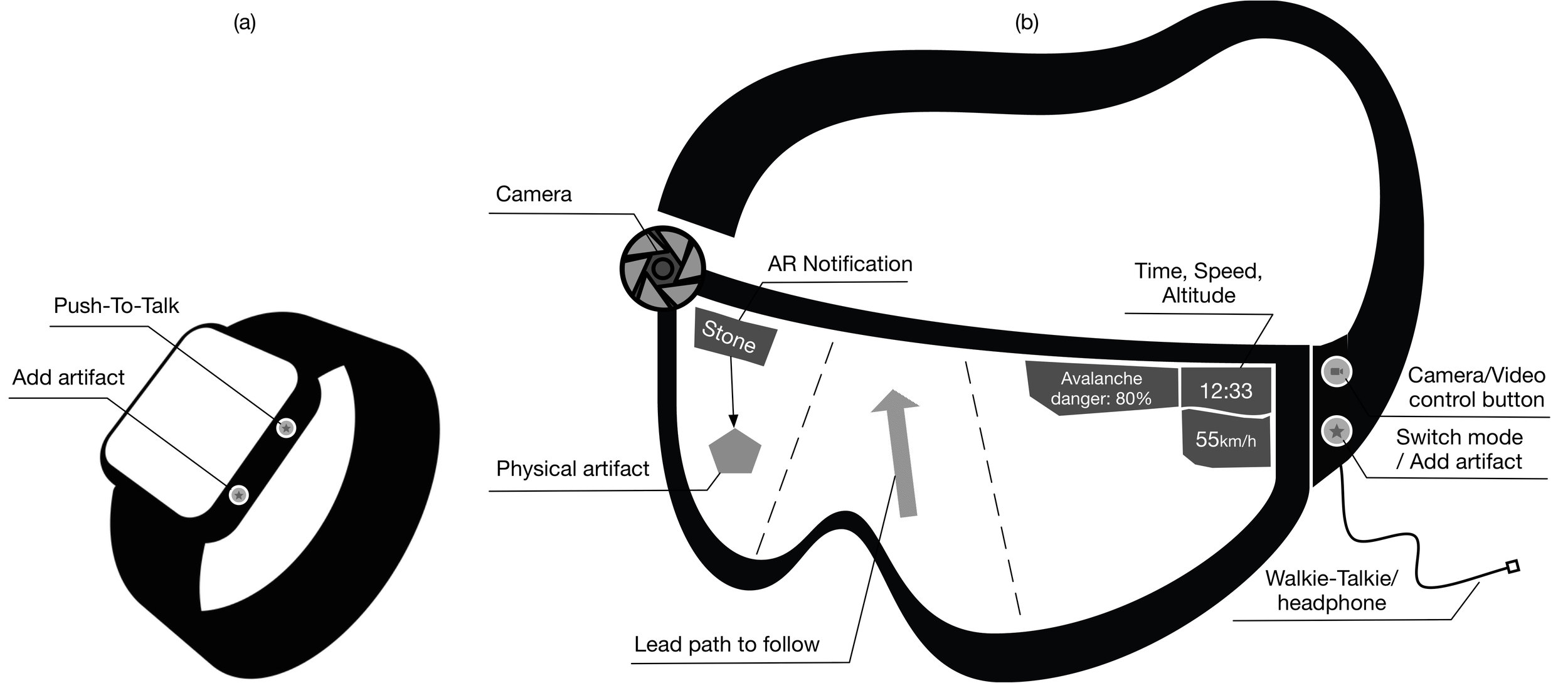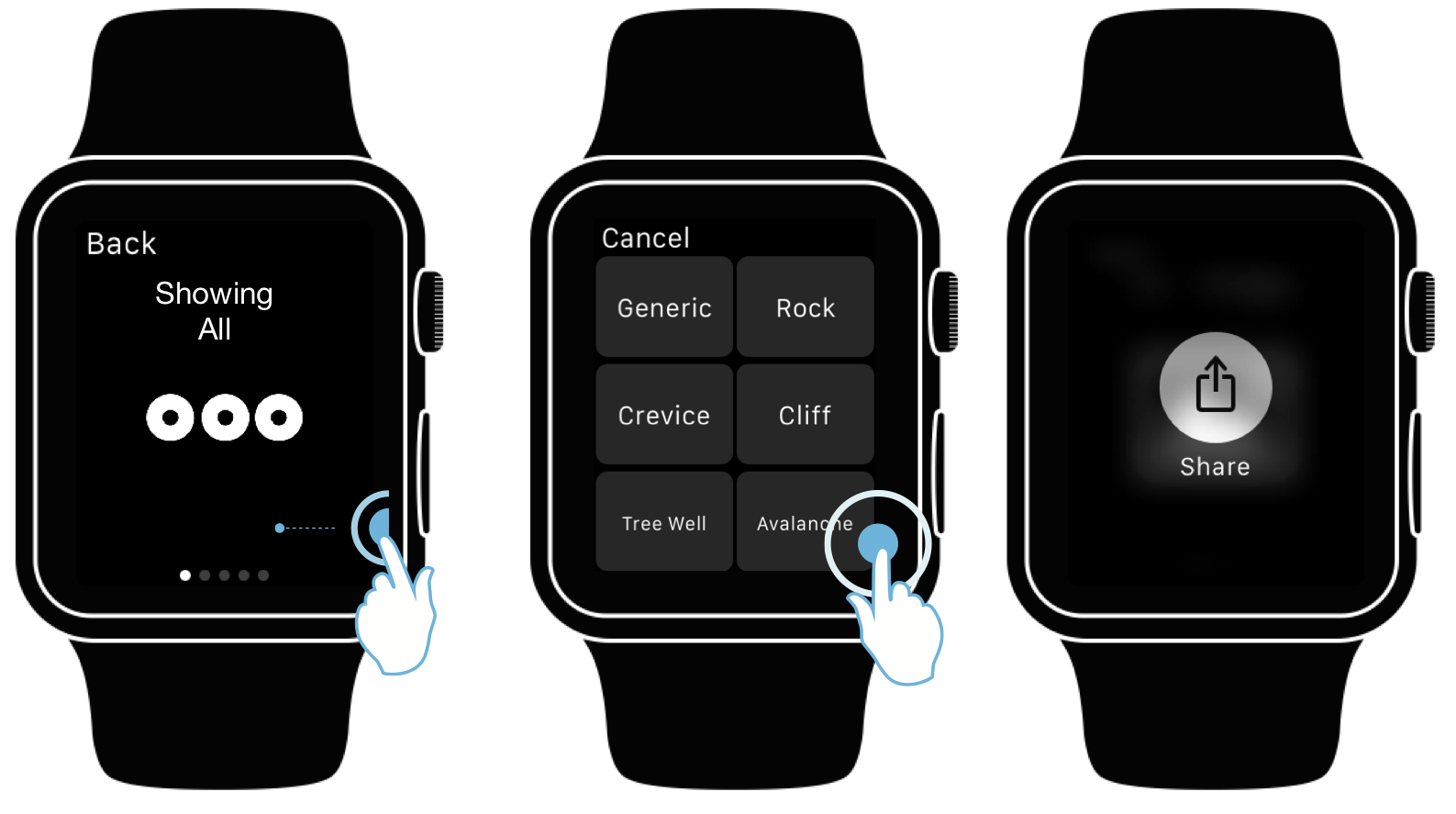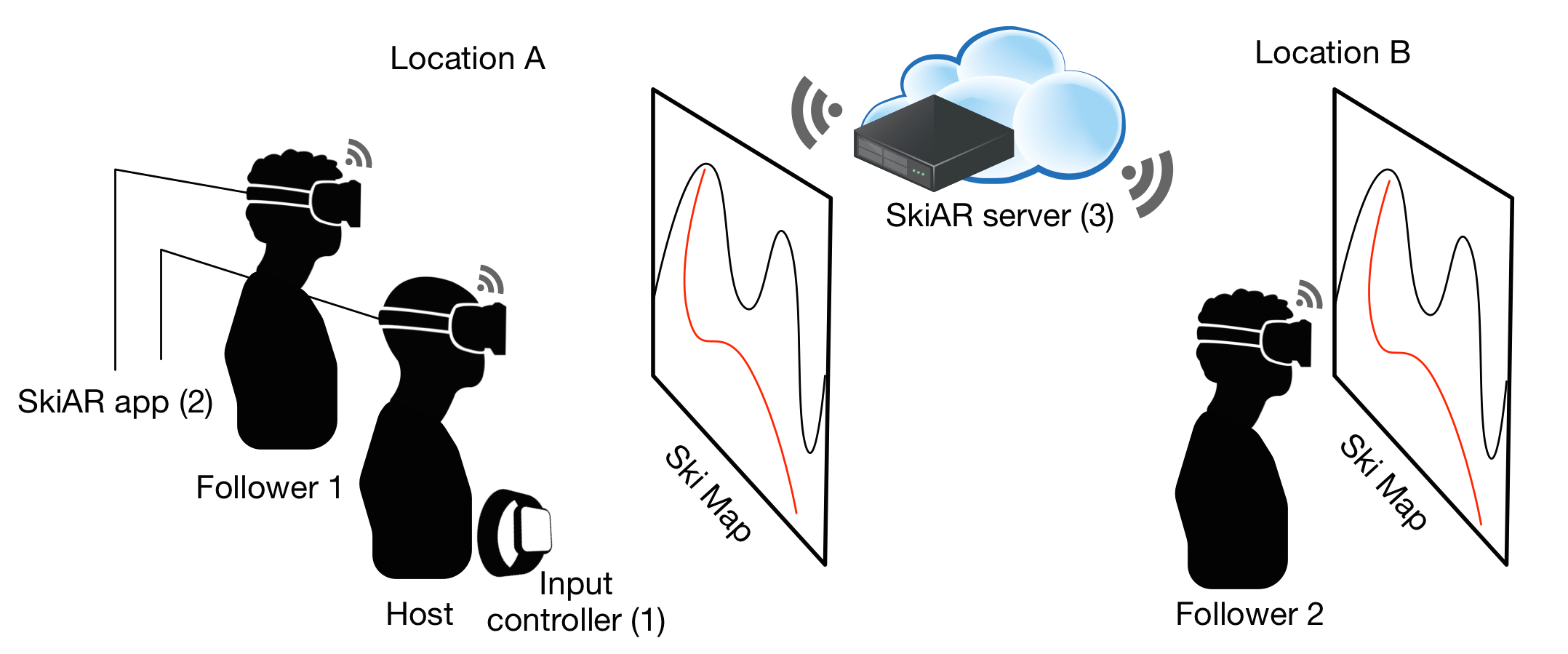SkiAR: a Wearable AR System for Sharing Personalized Content on Ski Resort Maps
type
Design Research
Field Study
Prototyping
method
Qualitative Interviews
Focus Group
Contextual Observations
Usability Study
Technology Probe
Design Ethnography
Design Workshop
period
2015-2016
―
This project consists of a series of qualitative inquiries into digital sharing practices of leisure skiers, which led to the design, development and deployment of SkiAR, a Wearable AR System for Sharing Personalized Content on Ski Resort Maps. I first started with contextual observations and interviews of the leisure skiers in the field. At the outset, I identified that skiers mostly shared three pieces of content: (1) reference (e.g., amount and types of hazards in the area) & contextual info, which helps them to make decisions and plan where to go next; (2) current location of group members; (3) photos and videos taken during the day. Often a GPS-tag can be assigned to each individual content item (e.g., through metadata). Also, I have outlined the design opportunities on how interactive technologies may facilitate sharing these types of content. In particular, I have specifically selected ski resort map as a design material owing to the fact that skiers spend a significant amount of time browsing them before, during and after the skiing activity. Then I have organized a co-design workshop and a focus group with seven backcountry skiers with a view to designing a prototypical concept to address skiers needs: to support decision making and planning while on the slope.
Winter sports like skiing and snowboarding are often group activities. Groups of skiers and snowboarders traditionally use paper maps or board-mounted larger-scale maps near ski lifts to aid decision making: which slope to take next, where to have lunch, or what hazards to avoid when going off-piste. To enrich those static maps with personal content (e.g., pictures, prior routes taken, or hazards encountered), I devised SkiAR – a wearable augmented reality system that allows groups of skiers and snowboarders to share such content on a printed panoramic resort map. In collaboration with colleagues from the geometric computing research group at USI Lugano we have designed a custom algorithm to map real-world GPS-tagged content to points on the artistic map using Bijective mapping approach to accurately place the shared information on the panoramic map. The contribution of our work is twofold: (1) a system that offers a novel way to review and share personal content in situ while on the slope using a resort map; (2) the results from a qualitative analysis of two user studies to inform the design and validate the usability and perceived usefulness of the prototype.
In 2016 this project was selected by the Faculty of Informatics at USI Lugano to be showcased at the Swiss Pavilion at CeBIT, the largest computer expo in Europe, where it attracted a lot of attention from the general public and businesses, and thus contributed to the strengthening USI Lugano presence at CeBIT in the subsequent years. You can find my impromptu demo pitch here recorded by a video blogger.
Project in collaboration with Alexander North, Evangelos Niforatos, Ivan Elhart, Teseo Schneider, Dmitry Anisimov and Marc Langheinrich from USI Lugano (Switzerland).
key Learnings:
1.
Sharing and discussing hazards is crucial to make group decision where to go next (especially relevant when going off-piste in unfamiliar locations). POIs and tracks were also found useful during the day. Pictures taken during the day were considered less important for decision-making, but rather useful for a review after a ski day within a group.
2.
Points-of-interaction (i.e., the location where actual group decisions are taken), as well as the temporal aspects of interactions (i.e., the fact that those interactions are often time-constrained), should be into account when designing in situ content sharing systems that support decision-making encounters.
3.
The interactivity that AR goggles and a wrist-worn controller offer, was considered useful and usable for sharing tasks among skiers within a group. The manufacturers of high-tech ski wear should incorporate content sharing functionalities into their designs in order to not only improve safety and decision-making on the slopes but also contribute to a positive skiing experience.
Publications:
Anton Fedosov, Evangelos Niforatos, Ivan Elhart, Teseo Schneider, Dmitry Anisimov, Marc Langheinrich (2016) Design and evaluation of a wearable AR system for sharing personalized content on ski resort maps **Best Paper Honorable Mention Award**, Proceedings of the 15th International Conference on Mobile and Ubiquitous Multimedia - MUM '16, p. 141-152, New York, New York, USA: ACM Press, url, doi:10.1145/3012709.3012721 pdf
Anton Fedosov, Ivan Elhart, Evangelos Niforatos, Alexander North, Marc Langheinrich (2016) SkiAR: Wearable Augmented Reality System for Sharing Personalized Content on Ski Resort Maps, Proceedings of the 7th Augmented Human International Conference 2016 on - AH '16, p. 1-2, New York, New York, USA: ACM Press, url, doi:10.1145/2875194.2875234 pdf
Anton Fedosov, Marc Langheinrich (2015) From Start to Finish: Understanding Group Sharing Behavior in a Backcountry Skiing, Proceedings of the 17th International Conference on Human-Computer Interaction with Mobile Devices and Services Adjunct - MobileHCI '15, p. 758-765, New York, New York, USA: ACM Press, url, doi:10.1145/2786567.2793698 pdf
Anton Fedosov, Evangelos Niforatos, Florian Alt, Ivan Elhart (2015) Supporting interactivity on a ski lift, Proceedings of the 2015 ACM International Joint Conference on Pervasive and Ubiquitous Computing and Proceedings of the 2015 ACM International Symposium on Wearable Computers - UbiComp '15, p. 767-770, New York, New York, USA: ACM Press, url, doi:10.1145/2800835.2807952 pdf








